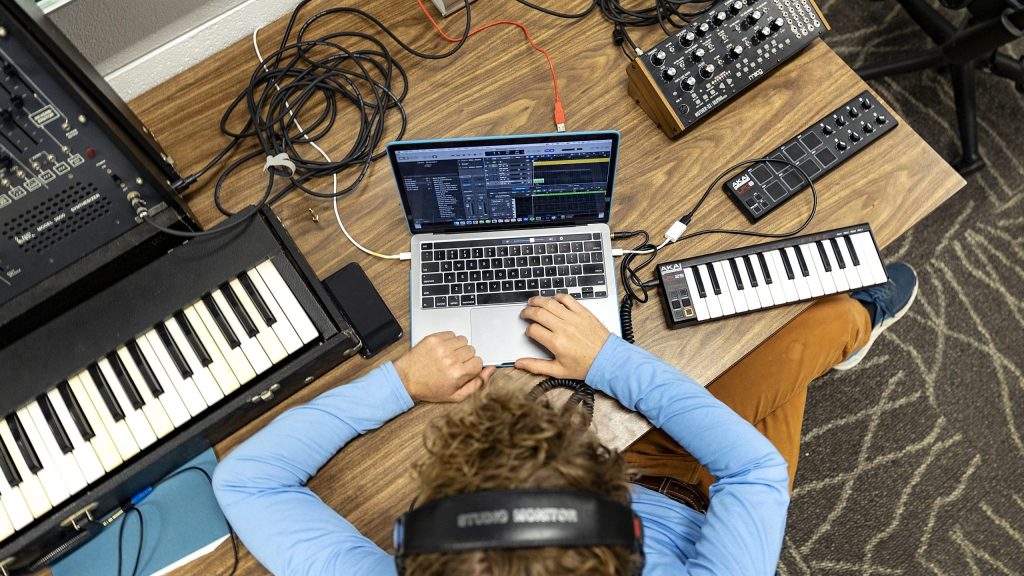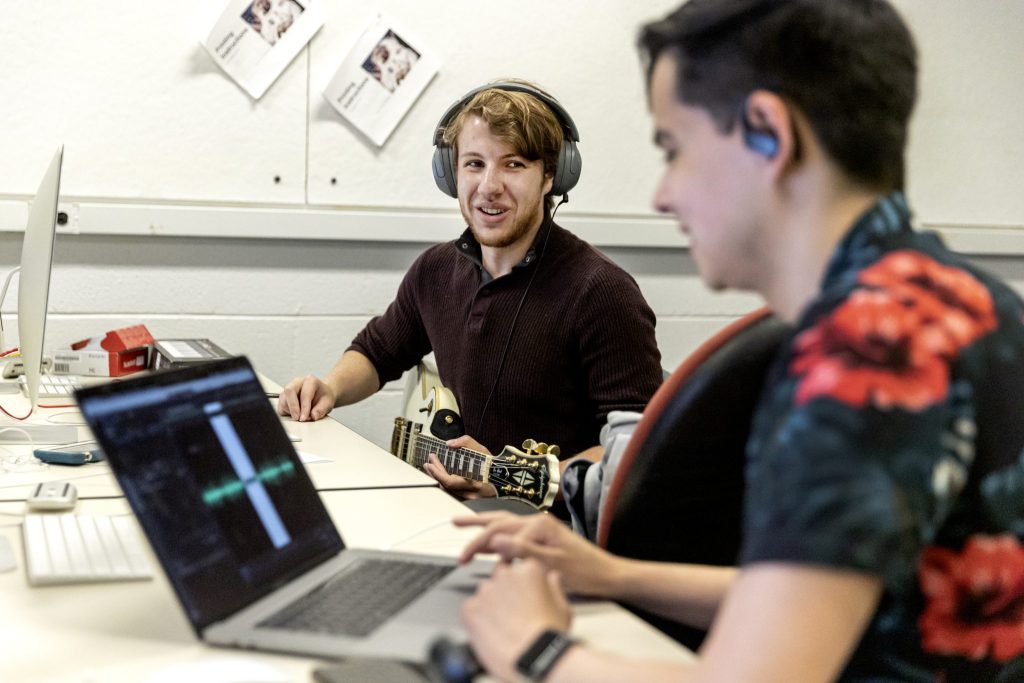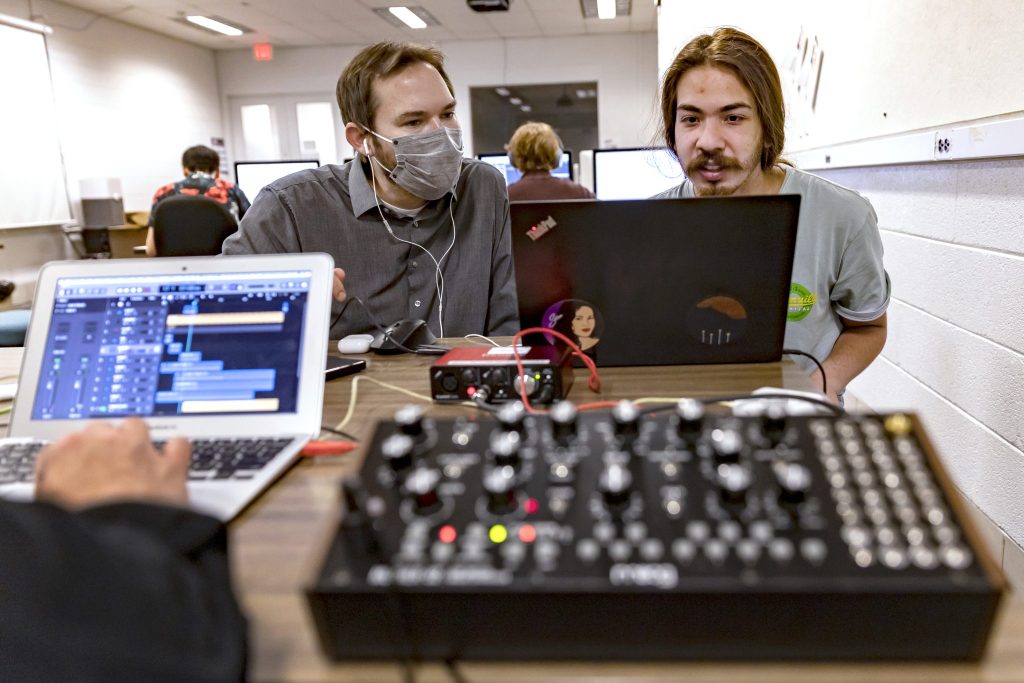Maymester’s “Introduction to Music Technology” gives students the opportunity to learn sound design and composition to bring their creative projects to life.

Students in noise-canceling headphones hovered over their computers, synthesizers and sound boards in the Hanes Art Center working to bring their ideas to life over the span of just three weeks in Maymester’s “Introduction to Music Technology” course.
Throughout the short, intensive class, students learned to arrange electronic music, add sound effects, edit audio and create sound design. The class culminated in a project that fit with the Tar Heels’ different academic backgrounds and passions.
“Out of the 12 enrolled in the course, only three of the students are music majors,” says Lee Weisert, an associate professor in the College of Arts & Sciences’ music department who led the course. “We also have history, English and computer science majors who signed up just because they find it interesting or want to practically use these skills.”
Nori West, a senior computer science major, took the course for experience using the software, Logic.
“The software is just one of the best out there, and I plan on using it for everything I do music-wise in the future,” West says. “Knowing how to efficiently use the tools that Logic has to offer is fantastic, as there are not a lot of basic tutorial videos for the software. Most digital audio workstations expect the users to already know what they’re doing, so the class was able to provide some of that information.”

Music major Nico Mclaurin took the Maymester for love. He wanted to learn how to synthesize chiptune music — a style of electronic music made using a programmable sound generator reminiscent of the music that accompanied classic arcade games — to accompany a pixel art game his girlfriend is programing.
“The course is fast-paced, but the information taught about sound waves led perfectly into using the software and technology as I was able to understand exactly what was happening to my sounds,” Mclaurin says. “The course gave me the information and tools necessary for me to make my chiptune music as well as understand what was happening ‘behind the scenes.’”
For three weeks, Weisert instructed the class on how to use software and hardware, including vintage synthesizers, to open up new creative possibilities. Each class of students in “Introduction to Music Technology” surprises Weisert with new methods of using the software and technology or asks a question about the creative process he’s never heard before, which is why he leaves the course’s final project open to interpretation.
“Everyone’s final projects are varied in subject and perspective because my students all come from different backgrounds, which broadens the horizons of everyone in the course,” says Weisert.

The only guiding instruction for the final project is that students must create or adapt a short video and create an accompanying soundtrack.
For his final project, West used stock footage to develop a video divided into two halves: nature and space.
“For the nature portion, I combined some ambient bird noises with some soothing guitar chords, layered with synths in the background, and a water drop sound effect I used as percussion,” West says. “For space, I used the same instrumentation but changed the scale to minor and turned the guitar into the melody rather than a chord before ending with heavy percussion to make a trap beat at the end.”
Wesiert says the variety of projects the students created as the capstone for the course exemplifies the purpose of the Maymester.
“I want to give them the tools to create their own work in the future and pursue their ideas,” Weisert says. “They should walk away from this Maymester with the ability to conceptually understand how this technology works and go beyond the standard to make something unique.”
